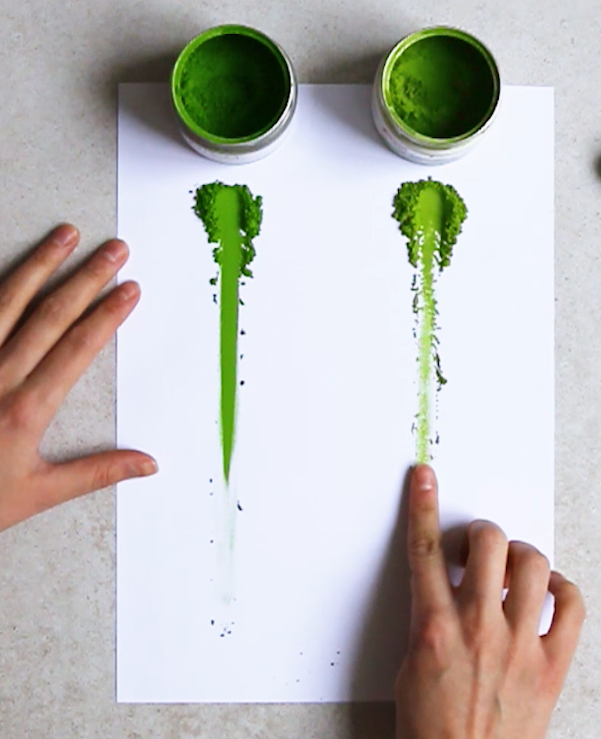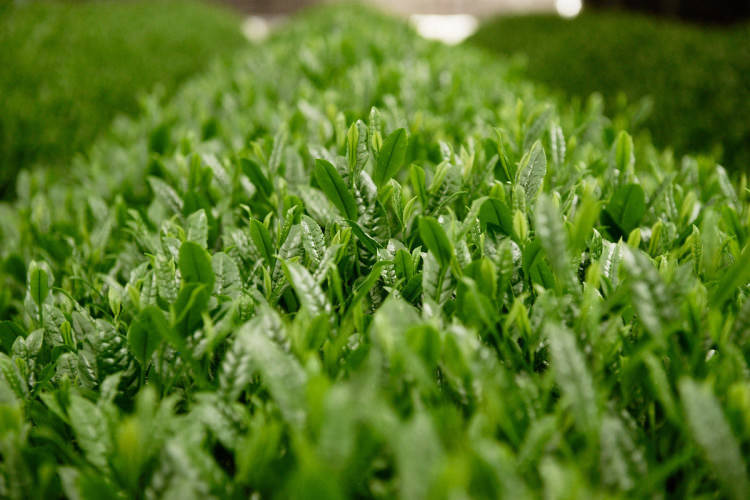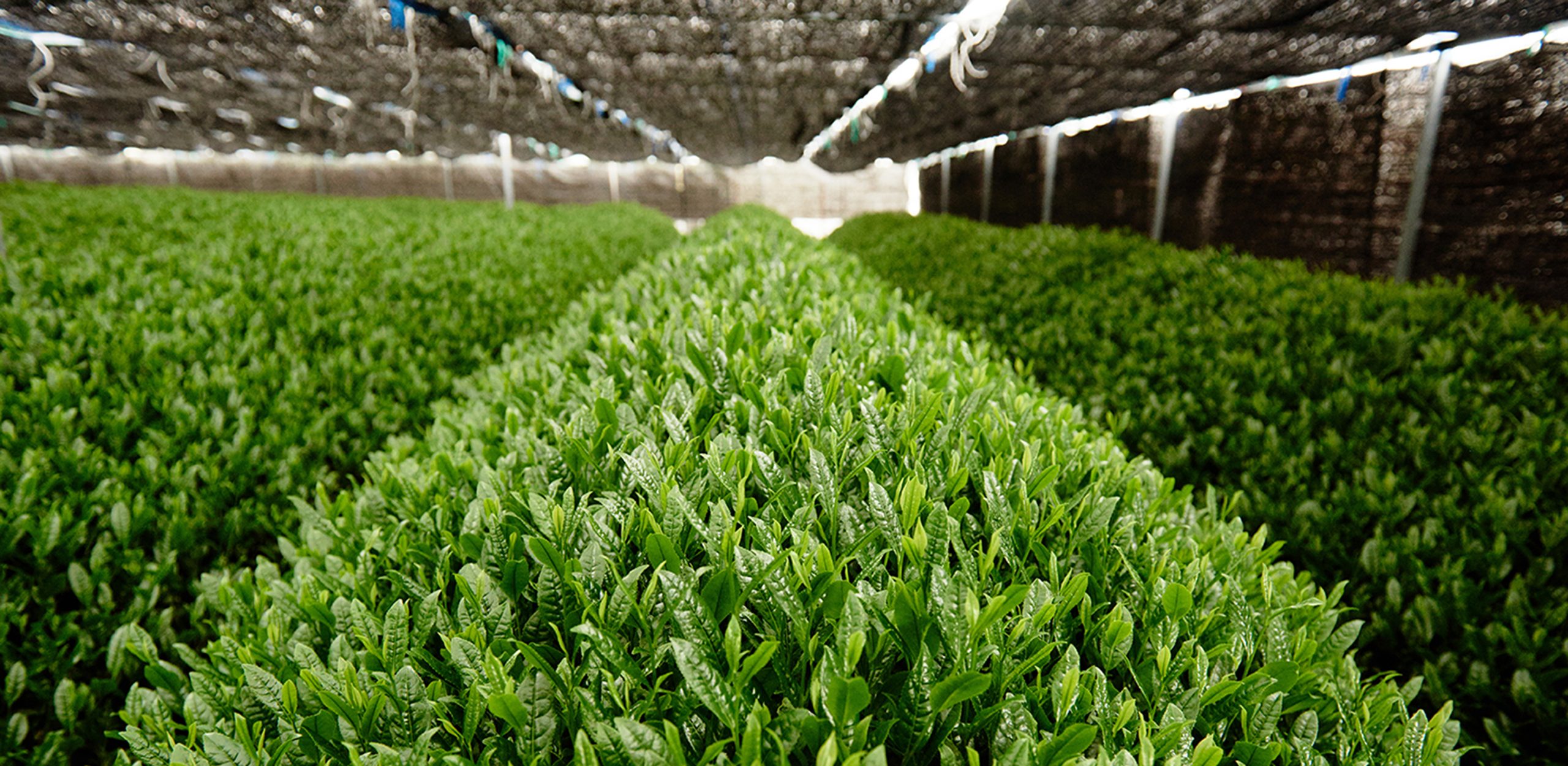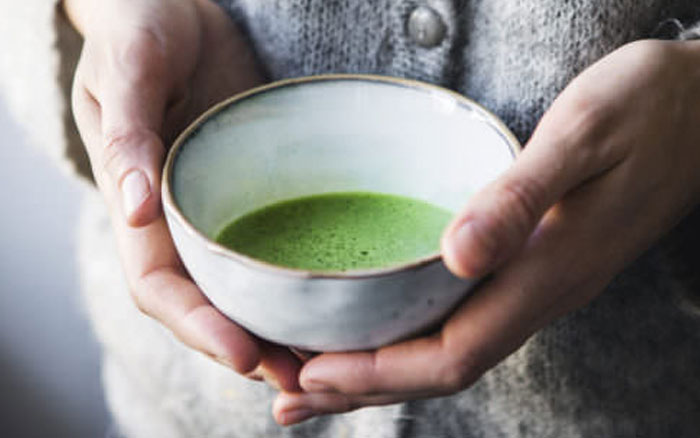FIGHT FAKE MATCHA
Matcha and Matcha is not the same. With rising popularity of the green gold in Europe, more and more products are making their way into the market, which call themselves “Matcha”, but actually have little in common with the traditional, Japanese original. In our position as the market leader and at the same time the quality leader for the category, it explaining the differences is one of our special interests.
Matcha is not a protected term! Therefore, there is also no official definition of the criteria, “real” Matcha has to fulfill to carry the name. Thus, many suppliers get the possibility to offer industrially grounded tea products of minor quality under the name “Matcha”. Experts call these products “fake Matcha” products.
The criteria that determine the quality of a Matcha product are versatile, and usually commonly known among Matcha connoisseurs. The most important characteristics of “real Matcha” are its color, the fineness of its grinding, the raw product used for grinding and the way of cultivation and processing. Additionally, also the smell and taste of a Matcha product are crucially important quality indicators.
High quality Matcha has a bright, emerald green color. Yellowish or even brownish Matcha powders are of minor quality. Frequently, the raw tea used for their production is not pure, precious Tencha leaves.
With the help of a Matcha Stroke test, you can test the quality of a Matcha product on your own. Just take a spoon and put a small amount of Matcha onto a piece of paper. Draw a line with your finger. A velvety, straight line is a clear indicator of a high Matcha quality. Sandy, interrupted lines, however, could be the result of a low Matcha quality, or even a “fake” product.
Real Matcha is traditionally produced from Tencha. After harvest, the tea leaves are carefully steamed, in order to stop fermentation and keep the tea leaf fresh. Afterwards, the leaves are dried at 180 °C and all stems and vessels are removed. The pure “flesh” of the tea leaf that is left, is called Tencha. Only this is later ground into Matcha.
The green tea for traditional, original Matcha products is grown in Japan. Four weeks before harvest the tea fields are shaded with dark nets. The deprivation of light makes the plant produce more Chlorophyll. At the same time, the plant is accumulating more precious amino acids and antioxidants, and it develops its mild, slightly sweet taste. What is more: Everybody who drinks Matcha, consumes the tea leaf as a whole. Therefore, the quality of a Matcha product is crucial. Ideally, a Matcha product should be 100 % organic.
The grinding of Matcha is traditionally done in granite stonemills. This method allows the production of 30 g of Matcha powder within one hour. That is about the content of one regular tin of Matcha.
The grinding in a stonemill is for sure more time consuming, but it is also the most careful way to process the delicate Tencha leaves into precious Matcha powder. Thus, the bright green color is preserved for longer, and also the fresh, slightly nutty aroma and the characteristic umami taste of the Matcha product are saved.





